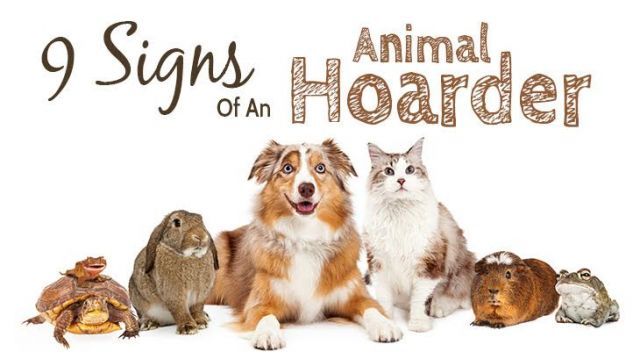Animal hoarding is a mental illness, and it’s important to recognize the difference between a true animal lover and a hoarder. The American Society for the Prevention of Cruelty to Animals (ASPCA) defines an animal hoarder as “someone who accumulates a large number of animals; fails to provide minimum standards of nutrition, sanitation and veterinary care; fails to act on the deteriorating condition of the animals … or environment … or the negative effect of the collection of the animals on their own health and well-being.”
Hoarder profile
While anyone may become an animal hoarder — also known as an animal collector — a profile emerges of the typical hoarder. Such people are predominantly female, with over 50 percent aged 60 or older. The same percentage live alone, and 75 percent are single, widowed or divorced. They are generally well-educated, and come from various income levels. Although cats and dogs are the most frequently hoarded animals, there are individuals hoarding horses, rabbits, reptiles — virtually any domestic animal. Not all hoarders exhibit the same behavioral patterns, but they share common traits.
Personal hygiene
Animal hoarders are typically reported by neighbors because of the smell emanating from the residence, a result of the accumulated feces and urine. However, the typical animal hoarder pays little attention to their own personal hygiene and appearance, and that’s a clue that something is amiss if a “rescuer” seems to take in a lot of animals.
Denial
The hoarder denies that the animals in their care are in poor condition, dirty or underfed. Some are downright delusional, insisting their animals and premises are just fine when it is obvious to the rational observer that is not the case.
Dead or sick animals
Dead animals are often not removed from the premises. A dead animal might be placed in the freezer rather than buried. Hoarders often do not acknowledge that an animal is dead or seriously ill. They refuse to euthanize animals enduring excruciating pain, often denying the animal is even sick.
Won’t accept help
Well-meaning people may try to help an animal collector, perhaps by offering to pay vet bills or find a home for a particular animal. The hoarder refuses help that will improve the animal’s situation.
They know best
Hoarders believe that no one else will care for the animals the way they do, even though it is obvious to other people these pets are in bad shape.
Hoarding other items
People who hoard animals often hoard other items. That includes newspapers, garbage, cans, cardboard — it runs the gamut. There is a connection between animal hoarding and obsessive-compulsive disorder (OCD), although most people with OCD are not hoarders.
Persecution
Hoarders may believe that animal welfare agencies and law enforcement are out to get them. These individuals have issues with authority figures.
Rescue hoarders
These days, there is tremendous pressure on those looking for a dog or cat to adopt a rescue pet. There’s nothing wrong with giving a needy animal a good home, but the prevalence of rescues has enabled some hoarders to set themselves up as nonprofit organizations. The mother and daughter involved in the animal hoarding episode in New Jersey apparently posed as a rescue and accepted donations for the animals’ care. “Rescues” run by hoarders typically make little or no effort to adopt out animals. They may have an adoption form and protocol, but even exemplary candidates are denied as adopters, often for trivial reasons. Although they do not adopt out animals, they continue to take them in, as if there are no limits to capacity.
Repeat offenders
Unfortunately, animal hoarders tend to become repeat offenders. Once convicted, they require lifelong monitoring. It’s not uncommon for convicted hoarders to move out of the area and start collecting animals immediately.
If you suspect someone is hoarding animals, contact your local humane society. You may save lives, or allow dying animals the dignity of humane euthanasia rather than the agony of starving to death or suffering extraordinary pain. If you cannot keep a pet, find a reputable rescue or take it to a shelter with a high adoption rate. If you rehome an animal, make a visit to the adopter’s home and ask for veterinary references. You don’t want your former pet to become part of a hoarding situation.
—Jane Meggitt

